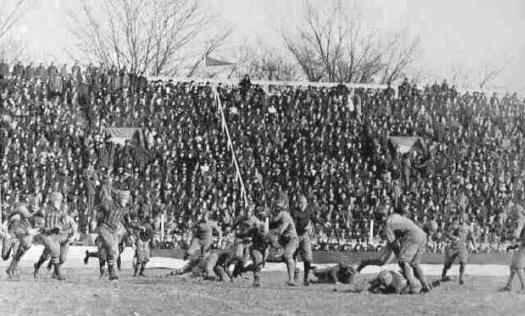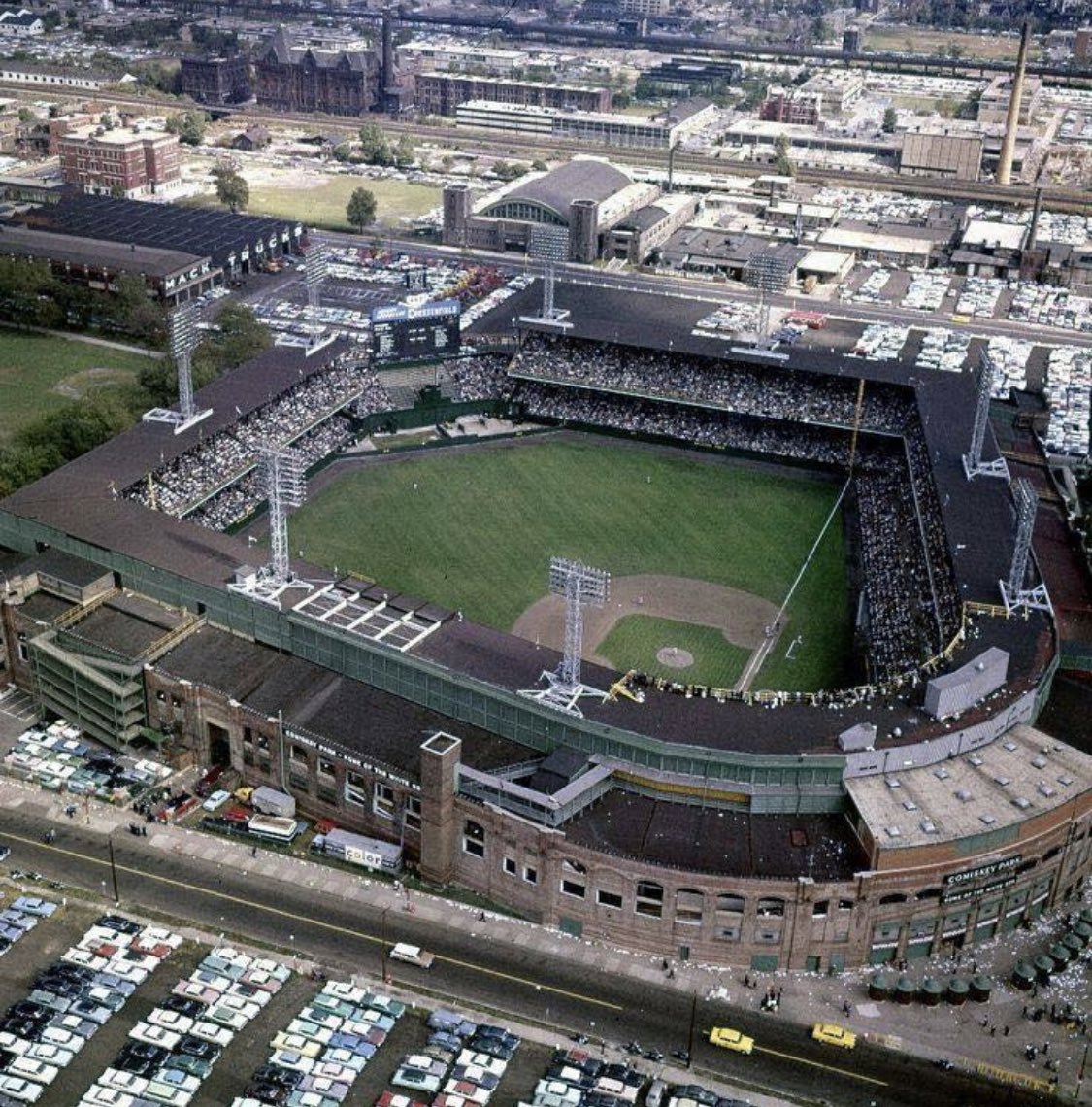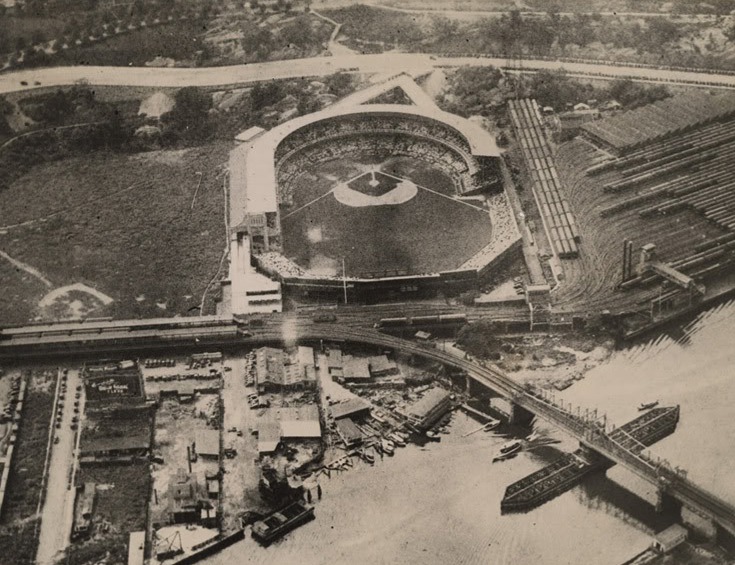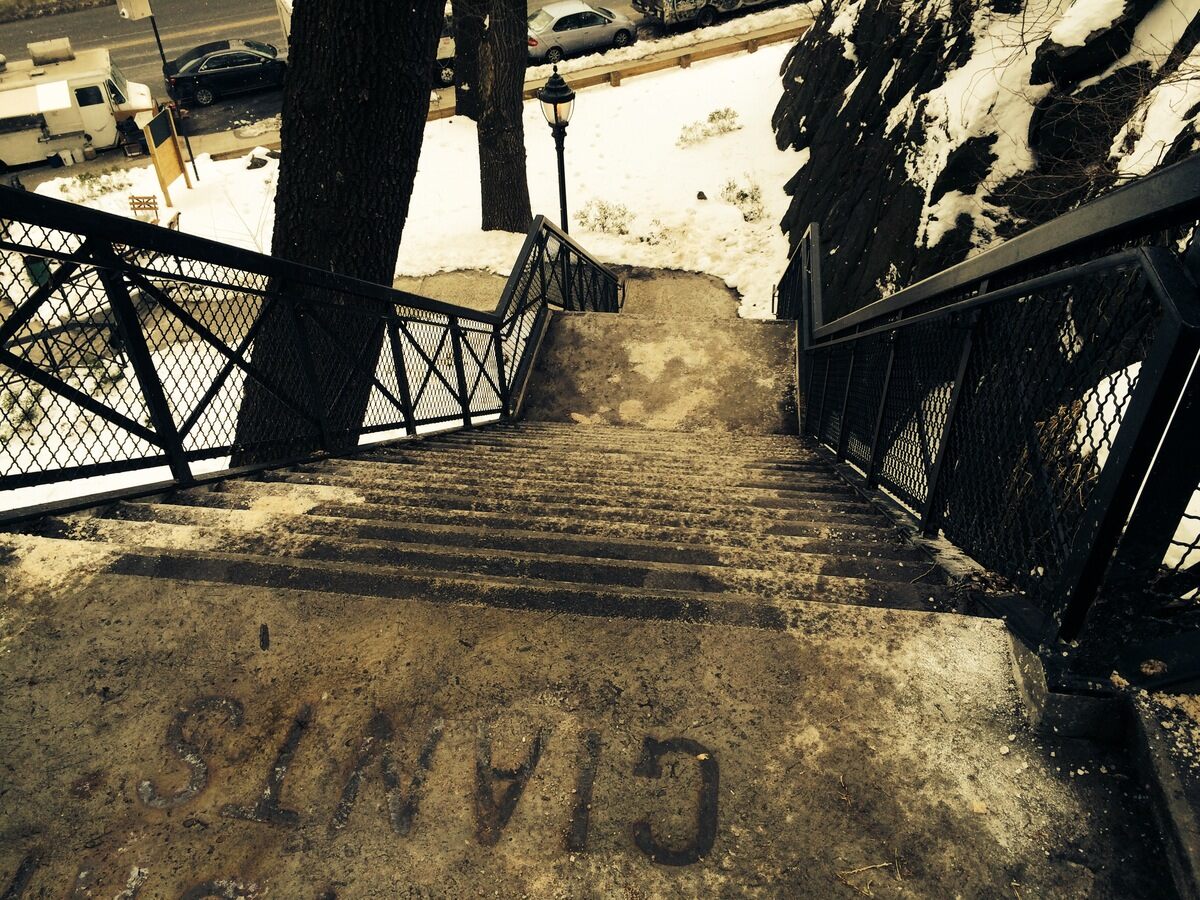POLO GROUNDS
Located in Coogans Bluff in upper Manhattan sat one of baseball’s most hallowed ballparks, Polo Grounds. This unique and storied ballpark was home to many legendary players, championship teams and memorable sports moments throughout its storied history. Polo Grounds was a name used on multiple ballparks dating back to the late 1800s. Named after the sport polo, the first Polo Grounds was located in the northeast corner of Central Park between 110th and 112th streets. Here in 1880, John Day rented land to construct a single tier grandstand for his baseball team to play at. Originally known as the New York Gothams, the team played their first game here on May 1, 1883. A second deck was added to the ballpark that year and the first Polo Grounds had a seating capacity of 12,000. Renamed the Giants in 1885, the team played their last game here on October 13, 1888. Manhattan officials evicted the team and 111th street was constructed through the outfield.
In 1889 the Giants moved to Coogans Hollow, a meadow below Coogans Bluff in Harlem, where the team played in several ballparks known as Polo Grounds over seven decades. Located along 155th and 157th Streets along 8th Avenue, the Giants played their first game at the second Polo Grounds on July 8, 1889. Located along 157th and 159th Streets was Brotherhood Park, home of the Players League New York Giants. Located side-by-side, there were two ballparks, with two different teams that shared the same name. The Giants played their last game at the second Polo Grounds on September 30, 1890. In 1890 the Players League merged with the National League and the N.L. Giants bought and moved into Brotherhood Park in 1891. Renamed Polo Grounds, the Giants played their first game here on April 22, 1891. The third incarnation of the Polo Grounds had a seating capacity of 16,000. The main double decked grandstand arched around homeplate and down the baselines. Bleachers were located in dead center field and 7,000 seats were added in 1908. By 1911, the ballpark had a seating capacity of 31,000 and was the largest stadium in baseball. Built of mainly wood, the ballpark caught fire and burned while the Giants were out of town on April 14, 1911. The ballpark suffered $250,000 in damage and was a complete loss.
During this time, other teams in baseball were constructing ballparks of steel and concrete. The Giants did the same and constructed the fourth and final Polo Grounds on the same location as its predecessor. On June 28, 1911, the New York Giants played their first game at the partially completed Polo Grounds. They had started the year at the New York Highlanders ballpark. The grandstand consisted of 16,000 seats and by the end of the season the capacity grew to 34,000. It featured a double decked grandstands extending from home plate, to half way down the left field line and 40 feet past the right field foul pole. The ballpark had several distinctive features including an Italian marble facade and seats that had decorative iron scrollwork. Polo Grounds inherited a new tenant in 1913 when the New York Yankees moved into the ballpark with the Giants. Although the distances were short down both lines to the foul poles, 279 in left field and 257 feet in right field, the distance to centerfield was 455 feet making it one of the longest in MLB history. Polo Grounds was a hitters paradise with the exception of centerfield. A pop fly down the either line could become a homerun easily. With acquisition of Babe Ruth the Yankees became a huge success, winning many games at Polo Grounds. Owner of the Giants, John McGraw became angry when the Yankees began drawing more fans than the Giants at Polo Grounds. After the 1922 season McGraw evicted the Yankees from the ballpark, leading them to build the greatest stadium in sports, Yankee Stadium, just a quarter mile south of the Polo Grounds.
Entire article with more pictures:
https://www.ballparksofbaseball.com/ballparks/polo-grounds/
The Last Remnants of the Polo Grounds
A crumbling staircase in upper Manhattan is all that remains of one of the most important sites in sports history.
High up on Coogan’s Bluff, the hill in Upper Manhattan that divides Harlem and Washington Heights, there is an old cast iron staircase.
Winding its way down from where West 158th Street meets Edgecombe Avenue, and looking down at the Harlem River, the hundred year old stairway ends up at a large housing complex. It is rarely noticed and hardly used at all. But once it would have been packed with excited sports fans making their way down the hill. Once, it used to lead to a ticket office. For the stairway is the last remaining relic of one of baseball’s most storied ball parks, the iconic and long gone home of the New York Giants, the old Polo Grounds.
Five New York sports teams actually called the Polo Grounds home between 1890 and 1963, amongst them, the fledgling Jets (then Titans), and the Yankees and Mets both used it when developing Yankee and Shea Stadiums respectively. But it is with baseball’s New York Giants that the fabled stadium is most associated.
Squeezed into the neighborhood bounded by 155th street, 8th Avenue, and Harlem River Drive, the ball park had an unusual, long bathtub shape, with short distances along the left and right field lines, but with an unusually long distance to centre field. It was so far away only three players ever hit home runs over it: Babe Ruth, Joe Adcock and Lou Gehrig. This was the golden age of New York baseball where deep seated, crosstown rivalries over pennants and World Series championships were fought between the Giants, Yankees, and Brooklyn Dodgers.
Entire article and more pictures:
https://www.atlasobscura.com/places/the-last-remnants-of-the-polo-grounds-new-york-new-york








